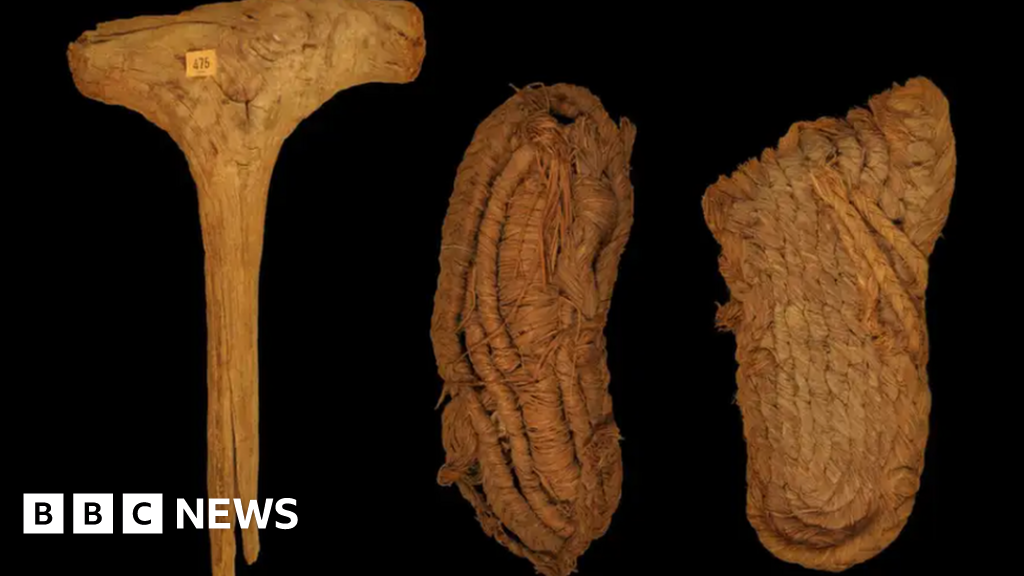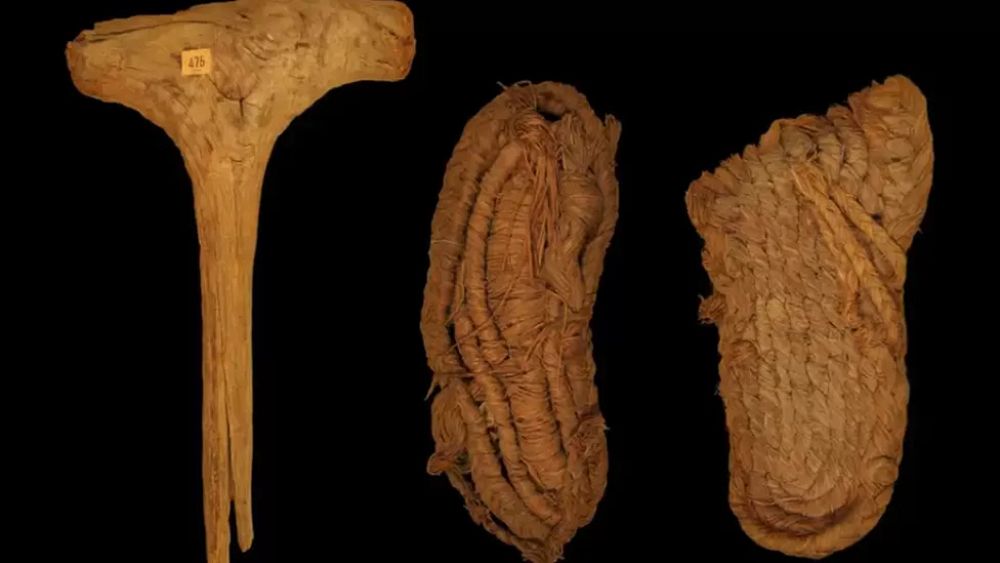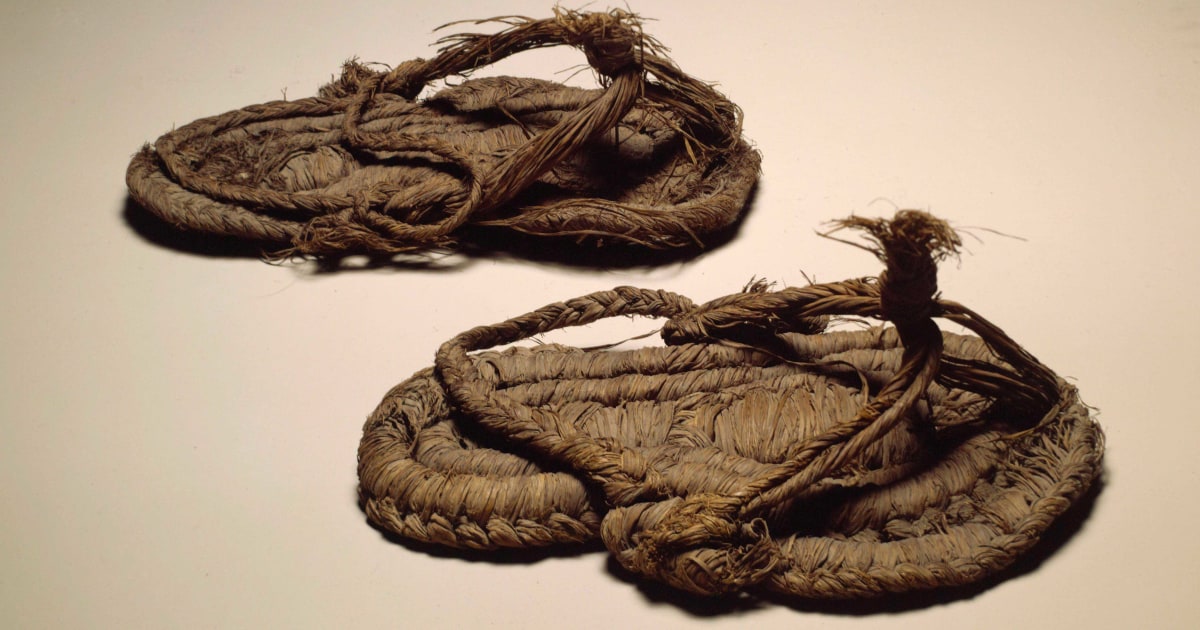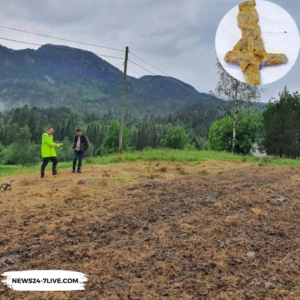Researchers have revealed what is is believed to be Europe’s oldest shoes, sandals woven from grass, dating back over 6,000 years. These old ancient artifacts were found in the Cueva de los Murciélagos, or the Cave of the Bats, situated in the region of Andalusia in southern Spain.

Also Read: 1,000 Year-Old ‘Alien Corpses’ Displayed at Mexico’s Congress
This remarkable find sheds new light on the technological prowess and skills of prehistoric communities, offering us a glimpse into the distant past when our ancestors crafted footwear to protect their feet.
The Cueva de los Murciélagos has a rich and varied history, tracing all the way back to the nineteenth century when it previously gained human attention.
Originally accessed by a landowner seeking bat guano for use as fertilizer, the cave later became a site for mining operations, leading to a series of surprising discoveries.
As miners began to excavate the cave in the 19th century, they uncovered a gallery containing a diverse array of objects, including partially mummified corpses, wild boar teeth, and a unique gold diadem.
While some of these artifacts were looted or destroyed over the years, a significant portion survived. In recent times, these relics have been the subject of intensive scientific study, revealing their true historical significance.
Among the artifacts recovered from the Cave of the Bats are intricately woven shoes made primarily from grass. These oldest shoes and sandals, believed to be over 6,000 years old, provide valuable insights into the lives of our ancient ancestors.
Also Read: Four 1,900-Year-Old Roman Swords Found in Dead Sea Cave
It’s remarkable to consider that these individuals, living during the Neolithic period, possessed the knowledge and skills to fashion such footwear from readily available materials.
This discovery pushes back the timeline for the earliest known European shoes, surpassing the well-known 5,500-year-old leather shoes found in Armenia in 2008.
The significance of these sandals extends beyond their age. Researchers have highlighted the diversity of technologies and treatment of raw materials employed by prehistoric communities.
The ability to weave grass into functional footwear showcases the resourcefulness and ingenuity of these early civilizations.
As María Herrero Otal, a co-author of the study, notes, these artifacts are “the oldest and best-preserved set of plant fiber materials in southern Europe so far known.”
One of the key breakthroughs in this research is the application of advanced dating techniques. These methods have allowed scientists to revise the estimated age of the artifacts found in the cave.
Also Read: British Museum: More than 1,000 Artefacts were Stolen
The collection of 76 objects is now believed to be about 2,000 years older than previously thought. Some items within this set even date back an astonishing 9,000 years, providing a window into the Mesolithic age.
The shoes found in the Cave of the Bats are not just practical items; they also offer insights into prehistoric fashion.
These grass-woven sandals are believed to have been secured to the feet of the individuals who wore them using twisted or braided cords.
Such details provide a glimpse into the clothing and personal adornments of ancient societies, allowing us to envision how our ancestors dressed and accessorized themselves.
The sandals ,along with other artifacts found in the cave, were crafted from a fiber known as esparto grass. This material has been used in Spain for centuries to make baskets and hats, and its utilization in these ancient shoes underscores its versatility.
Understanding the use of esparto grass in prehistoric footwear also raises questions about the availability of materials and the evolution of crafting techniques during this era.
Also Read: Tel Erani: Archaeologists Discovered 5500-Year-Old Gate in Israel
























